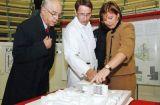New category makes use-inspired projects more visible

In 2011, the SNSF introduced the category "use-inspired basic research" for project funding. A first monitoring report of the SNSF now looks at how often this category is chosen and by what type of research project.
The monitoring report looks at the first three submission deadlines since the category "use-inspired" was first introduced in autumn 2011. When submitting their proposal, applicants decide themselves whether their project is use-inspired or not (self-declaration). If a project is declared use-inspired, the broader impact of the research has to be detailed in the research plan.
The monitoring report looks at how often the category is selected and by what type of project as well as at the disciplines and higher education institutions that submit use-inspired applications. On the basis of the monitoring data, the SNSF is able to assess the competitiveness of different fields and take appropriate measures, if necessary.
No impact on numbers of submitted proposals
The introduction of the category "use-inspired" did not lead to a marked increase of submitted proposals in project funding. At the same time, it did not open up new research areas for SNSF project funding. As expected, the submitted proposals mainly came from clinical research, engineering, architecture, universities of applied sciences and a broad range of disciplines in the humanities and social sciences. The proportion of use-inspired projects is stable at approximately 20%. This shows that there is a clear demand among researchers to declare their basic research project as relevant for the practical realm.
Few applications from universities of applied sciences
Researchers from all types of higher education institutions submitted use-inspired proposals. Universities of applied sciences have the highest proportion of use-inspired proposals. However, the overall proportion of applications from universities of applied sciences is very low at 6%. The numbers are particularly low in biology and medicine as well as in mathematics, natural and engineering sciences. One of the problems is that it is difficult to determine the number of potential SNSF applicants working at universities of applied sciences. Researchers at universities of applied sciences submit both use-inspired as well as purely basic research projects.
Lower success rates
The success rates of use-inspired research projects are lower than the rates of basic research projects. This holds true in all funding areas and for all types of higher education institutions. In addition, the figures show that the comparatively few applications from universities of applied sciences are less successful than applications from universities or ETHs - whether they are declared use-inspired or not. The universities of applied sciences achieve the best results in the humanities and social sciences, i.e. in the domain that has been applying for SNSF funding for a considerable period of time.
Summary: more visibility for use-inspired projects
After the first three submission deadlines, it has become clear that the main difference is visibility: the new category "use-inspired" did not generate a new research type but it contributed significantly to the visibility and adequate evaluation of projects between basic research and applied research (which were already submitted to the SNSF before the introduction of the new category).